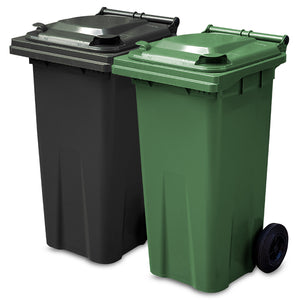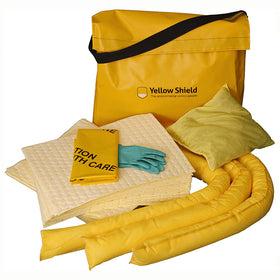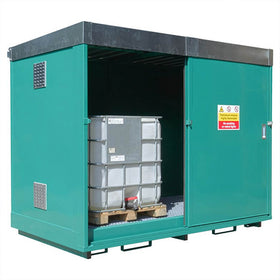Ask Yellow Shield: 10 tips on best practice in the use of wheelie bins for waste disposal
Following a few simple rules of good practice in managing your wheelie bins will help you keep your waste disposal legal, convenient and will avoid water pollution. Simple guidelines allow you to check if your waste is general municipal waste or needs any special treatment.
Wheelie bins used for general waste can give rise to offensive odours, fly nuisance and general hygiene problems. You can minimise such hygiene problems by following some simple rules in cleaning your wheelie bins.
- Assess whether your waste is general municipal waste or hazardous waste.
- Wastes from Commercial or Industrial Premises.
- Disposal of Used Oil.
- Line your Wheelie Bin.
- Contaminated materials
- Keep Lid Shut
- Stickers on the Bins
- Locate Wheelie Bins
- Clean Wheelie Bins
- Completely empty bin.
- Minimum of Water.
- Bio-degradable Detergent or Disinfectant is best.
- Store detergent and disinfectant safely.
- Contaminated waste water.
- Professional Vehicle Based Cleaning Services
- Drainage Systems
Hazardous wastes should not be disposed of through the general waste system. Examples of hazardous wastes are given below. If you have any doubt about whether your waste is hazardous or not refer to the Environment Agency website: What is a Hazardous Waste.
If the waste does not contain any hazardous wastes (as exemplified below) then the Duty of Care requires that any transfer of waste is accompanied by a written description which might read:
"General non – hazardous waste from light engineering consisting only of waste food from the canteen, paper, metal, cardboard and plastic packaging and floor sweepings."
Engine oils and absorbents saturated with engine oils should not be mixed with other substances or go in your general municipal waste wheelie bin. They should be disposed of as a Special Waste or via your Local Oil Bank. - Although vegetable oils can be disposed of through the general household waste. For further information see: Pollution Prevention Guidelines Safe Storage and disposal of used oils: PPG8.
A bin liner reduces bin contamination. Preferably the bin liner should be biodegradable.
e.g wipes, disposable nappies or food waste should be bagged within the bin.
Where vandalism is a problem or food is regularly disposed of, containers should be locked. Retrospective locks are available.
This helps identify the nature of the waste.
By keeping the Wheelie Bin out of direct sunlight, it will increase the wheelie bin life and reduce cleaning requirements
This should be done regularly following Environment Agency Guidelines on good practice
Prior to cleaning, empty any residual waste from the bin into a suitable bag which should then besealed.
Use the minimum quantity of water in cleaning. Where filtering the water is practical, 250 litres can clean up to 250 bins.
Whatever the detergent or disinfectant, minimise the amount used.
This prevents the potential of spillage.
This should not pass into any drainage system (your local water company will advise of the nearest location for disposal, a licence is requiredand a charge may be made).
If you find it difficult to comply with the above good practice then Customised vehicles are available for wheelie bin cleaning. These carry a supply of water and collect the wash water for re-cycling and final disposal to foul sewer at an approved site. The use of suchvehicles should prevent the problem of water disposal on site.
Whatever method you use for wheelie bin cleaning, you must not cause pollution of a watercourse.Most road gullies and drains are designed to carry surface water directly to the nearest river or stream,so any contaminated water, or non biodegradable detergent or disinfectant discharged into them will cause pollution, which is an offence, with amaximum fine of £20,000 in a magistrate’s court.
Examples of hazardous waste
Almost all businesses will produce some hazardous waste. Typical examples include waste:
- Asbestos
- Chemicals, eg brake fluid and printer toner
- Electrical equipment with potentially harmful components such as cathode ray tubes, eg computer monitors and televisions
- Fluorescent light tubes and energy-saving light bulbs
- Vehicle and other lead-acid batteries
- Oils (except edible oils), eg engine oil
- Refrigerators containing ozone-depleting substances
- Solvents, eg aerosols
- Pesticides



